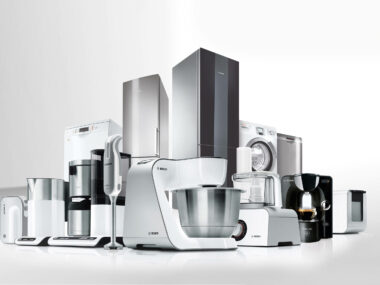As an avid observer of the intersection between technology and the environment, I’ve noticed a fascinating trend. Green spaces, once the last bastion of nature in our concrete jungles, are getting a tech makeover. But don’t be alarmed, it’s not what you’re thinking.
Tech isn’t bulldozing over these serene spaces. Rather, it’s helping us manage them better, enhance their beauty, and even create more of them. From smart irrigation systems to AI-driven conservation strategies, technology is becoming the silent partner in our quest for greener cities. So, let’s explore how technology is transforming the green space, and why it’s a trend worth watching.
The Role of Technology in Modern Agriculture
In the modern landscape of agriculture, technology has become a driving force, transforming the industry in significant ways. Following the trend in green spaces, farming isn’t lagging behind. Let’s delve into these changes.
Smart Farming Technologies
Smart farming technologies, including the likes of AI, Machine Learning, and IoT, have drastically increased efficiency. They offer solutions like improved navigation for machinery, predictive weather reports, and sophisticated monitoring systems for crops. For instance, companies such as LawnGuru provide tech-enabled services like smart lawn care, transforming traditional lawn management.
Precision Agriculture
Precision agriculture also plays a prominent role with technology helping farmers increase yield and reduce waste. It involves the use of GPS, remote sensing, and IT to manage crops and soil. It ensures every inch of the farm is used wisely, saving resources and boosting productivity. For example, precision irrigation systems target exact locations, optimizing water utilization and leading to healthier crops.
Innovations in Urban Green Spaces
Delving deeper into the transformative role of technology in green spaces, let’s explore some innovative applications that are revolutionizing urban environments.
Developments in Vertical Gardening
Vertical gardening, a technique that allows plants to grow in a vertical orientation, is experiencing significant transformation thanks to technology. For instance, automated systems control important parameters such as light, temperature, and water, providing the perfect conditions for growth. Additionally, AI-powered sensors can monitor nutrient levels, enabling tweaks to create optimal growth conditions.

These advancements make it viable to grow a variety of plants in an urban setting, from decorative flowers to fresh produce. It also increases the amount of green space available, especially significant in highly urbanized areas with limited horizontal space.
Smart Parks and IoT Integration
Transitioning from agriculture, I move on to another urban context – parks. Smart parks are redefining urban green spaces through the incorporation of Internet of Things (IoT) technology. With devices that monitor weather conditions, soil moisture, and vegetation health, parks can be maintained more efficiently. For instance, automated irrigation systems can activate when moisture levels drop, saving water by only watering when necessary. Furthermore, smart parks can provide valuable data on elements such as park utilization and shade patterns, which can be used to drive future planning and development. The application of IoT in green spaces, such as those found on https://lawnguru.co/, epitomizes the fusion of technology with nature, enhancing environmental sustainability while ensuring aesthetic functionality.
Impact of Renewable Energy in Sustainability
Progressing from the infusion of technology in green spaces and modern agriculture, we delve into the transformative effects of renewable energy on sustainability. The innovations seen in solar power production and bioenergy technology provide great insights into our green future.
Solar Power and Green Technology
The marriage between solar power and green technology has resulted in an energy-efficient world. Solar panels, once bulky, expensive affairs, have become affordable and compact enough to be integrated seamlessly into green spaces. I’ve come across real-world implementations at lawnguru where solar panels power intelligent irrigation systems and AI-driven conservation efforts, reducing greenhouse gas emissions.
Silicon-based solar cells, responsible for the majority of solar energy generation, are continually improving in efficiency, offering an increasingly viable alternative to fossil fuels. Solar energy storage has also seen advancements. Lithium-ion batteries, with their remarkable energy density, have greatly improved the reliability of solar power, allowing for energy storage during peak sunlight hours and usage during low sunlight or night time.
Innovations in Bioenergy
Looking at bioenergy, we’re seeing a surge in innovative ideas. The production of biofuel from organic waste not only reduces greenhouse gas emissions but also offers a valuable solution to waste management. Large scale biomethanation projects, where waste converts to biogas, provide a significant source of clean energy.
Algae biofuels are gaining traction, with the algae’s rapid growth rate and high lipid content allowing the creation of renewable oil. The Department of Energy in the US estimates that algae biofuel could yield up to 60 times more oil per acre than land-based plants. Therefore, it’s not hard to see why this potential goldmine of renewable energy has attracted significant investment and interest.
To succinctly capture the whole concept, renewable energy, through solar power and bioenergy, is now a significant contributor to ecological sustainability. It’s evident that the technological revolution in the green space is going far beyond conventional boundary lines.







